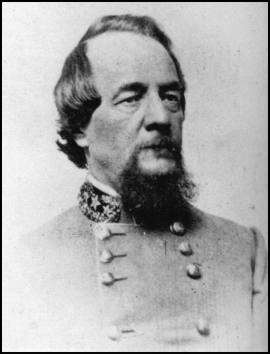Jackson’s Mountain Top Rendezvous
May 8, 2012 marks the 150th anniversary of Confederate General Thomas J. “Stonewall” Jackson’s first victory in the Shenandoah Campaign of 1862. Some historians credit this victory, at the Battle of McDowell, as the first battle in that infamous campaign—others credit his only defeat at 1st Kernstown-I’ll let you be the judge.
Following the action at Kernstown at the end of March, the situation in the Shenandoah Valley had changed drastically. Nathanael Bank’s forces had been returned and been reinforced by President Abraham Lincoln. In addition, General John C. Fremont had advanced down through western Virginia (or after 1863 West Virginia) to try and trap Jackson’s forces in the Shenandoah Valley. A small token force, approximately 3,000 men, dubbed the Army of the Northwest under General Edward “Alleghany” Johnson had been slowing the advance of Fremont’s forces.
At the ensuing Battle of McDowell, the Confederates were attacked on Sitlington’s Hill by the combined forces of Robert Milroy and Robert Schenk (two brigades of Fremont’s Union forces). During the fighting, Confederate General Johnson was grievously wounded in the foot. The attack, which started in the afternoon, lasted into the evening hours. Jackson was content to remain on the defensive thwarting the Union attacks until he could find a way to flank the enemy. After four hours the engagement came to a close at dusk, when the Northern soldiers withdrew to the town of McDowell.
Starting the next day, Schenk in command of the Union forces began pulling out of the town and only light skirmishing occurred as Confederates moved through McDowell in pursuit. This began a week long chase by Jackson’s (incorporating Johnson’s men) of Schenk as far north as Franklin, approximately 30 miles away. Not being able to catch his fleeting antagonists, Jackson turned his men around and headed back to the Shenandoah Valley-where his star continued to rise.
Although, historian Robert Tanner acknowledges that the Battle of McDowell “was an affair of gnats compared with later engagements of this war,” the participants, including Johnson, spoke of the severity of the fight. Johnson, writing later, referred to the battle by 6pm as “very terrific.”  Joe Kaufman, of the 10th Virginia, remembered McDowell by how he “could see the men falling in every direction” as they were being ordered to the front. He added, “it was the hour to try men’s souls.”
Joe Kaufman, of the 10th Virginia, remembered McDowell by how he “could see the men falling in every direction” as they were being ordered to the front. He added, “it was the hour to try men’s souls.”
At the Battle of McDowell, casualties numbered approximately 750 men. 498 men wearing Confederate butternut and gray fell along with 256 who wore Union blue.
A good source for information (and one used for this post) and further reading about the Battle of McDowell can be found at http://www.civilwar.org/battlefields/mcdowell.html and checking out the links from that webpage.
Two good books on the Battle of McDowell and Shenandoah Valley Campaign are:
Stonewall in the Valley by Robert Tanner
Shenandoah 1862 by Peter Cozzens
